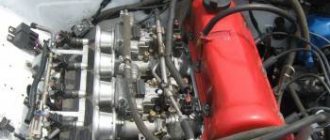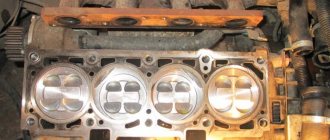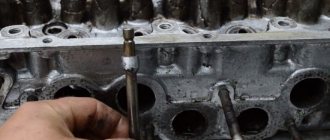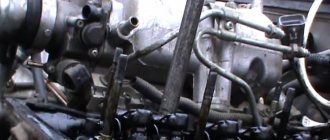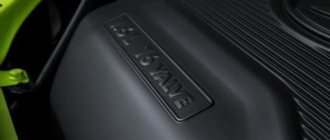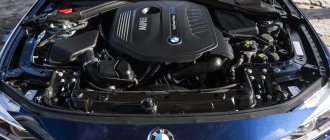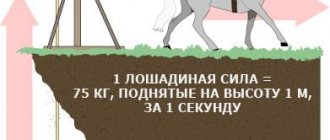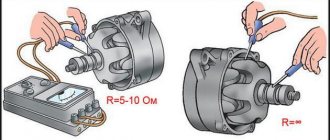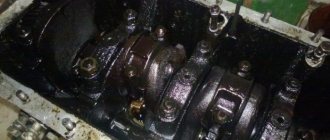The car engine is one of the main parts that takes up most of the space under the hood. The vehicle’s ability to fulfill its main task – to drive, transport people and cargo – completely depends on its operation.
The condition of the engine is directly related to operating conditions, care and mileage. Every motorist knows that over time, parts inside the internal combustion engine wear out and require replacement. In this case, you need to do a major overhaul of the worn-out engine in the garage with your own hands.
Is it worth doing an engine overhaul?
The engine for 2101-2107 was developed by the Italians in the 50s of the last century. Since then, the design has not changed, only in 2007 the 2107 model was equipped with an injector. The engine is very simple, and if you have a repair book, as well as a set of tools, you can successfully carry out high-quality engine repairs. The cost of capital, even under ideal repair conditions, is inexpensive.
Regarding the service life: according to the manufacturer’s statement, the engine runs for 120,000 km, after which the block is bored to the repair size, and so on 2 more times, after which the block can be thrown away. Subject to high-quality spare parts, proper troubleshooting, the use of high-quality lubricants, and professional assembly, our engine can travel 150-200 thousand, from replacement to oil change and some consumables.
The main signs of a VAZ engine malfunction
You can determine that a VAZ engine needs repairs based on the following characteristic signs:
- Traces of engine oil leakage appeared;
- Oil consumption has increased. This may indicate a malfunction of the piston group parts. If the malfunction is confirmed, the element will need to be replaced;
- Extraneous noises, grinding noises during engine operation;
- Unnatural color of exhaust gases.
If at least one of these signs appears, you must immediately contact the specialists of our auto center, who, using specialized diagnostic equipment, will accurately determine the breakdown and take measures to eliminate it.
Ignoring the problem can lead to more serious troubles, including major repairs.
Repair tool
We will need:
- universal set of sockets and keys;
- screwdrivers;
- torque wrench;
- piston ring clamp;
- crane for dismantling and mounting the motor;
- hammer.
From technical fluids and lubricants:
- motor oil 10w40 or 5w40 4 liters and 1 liter jar ($30);
- green or blue antifreeze 10 liters ($18);
- copper paste 1 tube ($5);
- Victor Reinz sealant ($5).
Prices for repair of VAZ, LADA engines
| Petrol engine repair | Price, rub. |
| ICE repair gasoline 8 valves | from 20 000 |
| ICE repair gasoline 16 valves | from 25 000 |
| Engine repair gasoline V6 | from 50 000 |
| Engine repair gasoline V8 | from 55 000 |
| Engine repair gasoline V10 | from 60 000 |
| Engine repair gasoline V12 | from 70 000 |
| Detection of an internal combustion engine defect (with the cylinder head removed) | from 5 000 |
| Removing the internal combustion engine | from 8 000 |
| Installation of internal combustion engines | from 10 000 |
| Diesel engine repair | Price, rub. |
| Repair of internal combustion engine diesel 8 valves | from 55 000 |
| Repair of internal combustion engine diesel 16 valves | from 65 000 |
| Repair of internal combustion engine diesel 5 cylinders in-line | from 75 000 |
| Repair of internal combustion engine diesel 6 cylinders in-line | from 75 000 |
| Engine repair diesel V6 | from 85 000 |
| Engine repair diesel V8 | from 90 000 |
| Engine repair diesel V10 | from 95 000 |
| Detection of an internal combustion engine defect (with the cylinder head removed) | from 5 000 |
| Removing the internal combustion engine | from 15 000 |
| Installation of internal combustion engines | from 18 000 |
| Other engine repair work | Price, rub. |
| Oil pressure sensor - replacement | from 800 |
| Crankshaft position sensor - replacement | from 800 |
| Speed sensor - replacement | from 800 |
| Coolant temperature sensor - replacement | from 800 |
| Throttle valve, idle air valve 8V - replacement, cleaning | from 2000 |
| Throttle valve, idle air valve 16V - replacement, cleaning | from 2000 |
| Ignition coil - replacement | from 900 |
| Valves - replacement | from 8000 |
| Exhaust manifold - replacement | from 4000 |
| Valve seals 8V - replacement | from 12 000 |
| Valve seals 16V - replacement | from 16 000 |
| Piston rings - replacement | from 15 000 |
| Muffler lambda probe - replacement | from 1 000 |
| Exhaust manifold lambda probe - replacement | from 1 500 |
| Oil pump - replacement | from 5 000 |
| Rear engine mount - replacement | from 1 500 |
| Left engine mount (gearbox) - replacement | from 2 000 |
| Right engine mount - replacement | from 1 300 |
| Heater stove (radiator) - replacement | from 5 000 |
| Engine sump - replacement | from 3 000 |
| Muffler cushion - replacement | from 600 |
| Intake manifold gasket - replacement | from 2 000 |
| Exhaust manifold gasket - replacement | from 2 500 |
| Camshaft replacement | from 6 000 |
| Rear crankshaft oil seal - replacement | from 12 000 |
| Front crankshaft oil seal - replacement (with the timing belt removed) | from 400 |
| Front crankshaft oil seal - replacement | from 2 000 |
| Camshaft oil seal - replacement | from 850 |
| Generator pulley - replacement | from 4 500 |
| Replacing the engine cooling radiator | from 3 000 |
| Replacing the thermostat | from 1 500 |
| Replacing the engine cooling fan | from 1 500 |
| Replacing the pump | from 2 500 |
| Replacing the expansion tank | from 1 000 |
| Replacing the cooling system pipe | from 1 200 |
| Replacing the cooling system pipe clamp | from 300 |
Services
For high-quality repairs, we will need to send the cylinder head and the block itself for grinding. To make the plane even, to ensure a smooth surface and stable operation of the engine, remove 1 mm from the surface of the block, and 2 mm from the surface of the cylinder head. In total, 3 mm will be removed, thereby increasing the compression ratio to 10:1. The engine initially does not have a piston return to TDC of 1.95 mm, and the thickness of the gasket is approximately 1 mm, so you can safely sharpen the block and cylinder head.
The cylinder head must be pressed for pressure testing, checking for the formation of cracks in the channels. If they are not there, then the craftsmen install new valve guides, install valves with seals and grind them in. In total, such work will cost about 50 euros, depending on the region. If desired, you can lighten the flywheel by 1.5 kg by removing the metal around it.
What does the price depend on?
Motorists who need engine overhaul of a VAZ-2114 are faced with different prices for such a service. The cost depends on the influence of factors:
- Engine capacity.
- The prestige of the service company, its pricing policy.
- Urgency.
- Scope of work.
- Difficulty of repair.
- The need for a specialist to visit.
- Cost of spare parts.
- Equipment used.
- Automotive technician qualification level.
The more work is required to restore the engine of a VAZ-2114 car, the more expensive the service of a specialist will cost. You will have to pay extra for urgency and a specialist visit.
What spare parts are needed
- repair size pistons with rings (70ue);
- connecting rod and main bearings (15ue);
- camshaft 21213 (for the best “low-end” 35ue);
- split gear (in order to correctly set the 20ue marks) and a new chain (12ue);
- valves, guides and seals (20ue);
- valve springs (15ue), the purchase of which is often neglected;
- rocker depending on condition;
- cylinder head bolts (3ue);
- automatic chain tensioner (11ue);
- set of gaskets and seals (10ue);
- oil pump assembly (30ue);
- gear tensioner shoe (25ue);
- thermostat, pump and cooling pipes (20ue);
- BSZ (45ue) to provide a powerful spark, respectively + new wires with spark plugs (15ue);
- carburetor repair kit (4ue);
- filter (oil, fuel, air (5ue);
In total, work with parts and liquids, on average, will cost 470, provided high-quality spare parts are used, which will ultimately give a well-functioning engine with a long service life, as well as a power of about 85 hp.
Overhaul of VAZ, LADA engine
A major overhaul of a VAZ engine , due to the high complexity and responsibility of the event, can take several days and consist of the following stages:
- Removing and disassembling the engine, thoroughly washing and cleaning all elements;
- Defeating – identification of parts and assemblies that cannot be restored;
- Restoring the working condition of the cylinder block, cylinder head, crankshaft, etc.;
- Engine reassembly;
- Cold running and engine tuning.
Employees of the Auto-Maxima car service strictly control each stage of work, and only with positive results do they proceed to the next one. Thanks to this approach, we perform major repairs of a VAZ engine with consistently high quality and ensure further trouble-free and long-term operation of the vehicle after its repair.
Repair process
To begin with, we remove the engine from the beam and begin to disassemble it, simultaneously carrying out troubleshooting of the parts. We send the head and bare block for milling and assembly of the cylinder head. When the parts arrive, we begin assembling the block.
Before installing pistons and connecting rods, they need to be weighed. The difference in weight, in tolerances, should not exceed 3 grams. If the difference is normal, use a piston ring clamp and gently tap with a hammer to press the pistons into the block. After this, we attach the connecting rods to the crankshaft using the journals. During installation of the pistons, the cylinders should be lubricated with oil, as well as the places under the liners. This is required so that in a short period, when the pressure in the system is insufficient, there is no increased friction of parts. We need copper grease to lubricate the connecting rod cap bolts!
Next, we install the oil pump, and pour a little oil into the oil receiver, after which we place the pan on the gasket and sealant.
What is this?
Engine overhaul refers to the work of a master aimed at returning the engine to a state as close as possible to its original state. In this case, most of the nodes are changed or restored. This type of repair is resorted to when there is a lot of wear on the parts of the unit.
The list of work may include grinding the crankshaft journal and camshaft, installing new pistons and springs, and honing the cylinders. If too many engine components are faulty, then it is more advisable to completely replace it.
The following signs indicate that it is time to overhaul the engine on the VAZ-2114:
- The appearance of red, black or dark gray carbon deposits on the spark plugs.
- Increased oil consumption.
- The occurrence of knocking in the engine.
- Increased fuel consumption.
- The appearance of smoky exhaust.
- Bad traction.
- Engine overheating.
- At idle, the engine runs unevenly.
- Reduced power.
Major repairs proceed approximately according to this scheme:
- Preparing the engine for dismantling (disconnecting wires, hoses, gearbox).
- Removing the engine.
- Removal and inspection of the cylinder head.
- Disassembling the unit for diagnostics and cleaning.
- Block boring. Grinding the crankshaft. Application of hone to the cylinder walls.
- Weight distribution of connecting rods, pistons.
- Block assembly.
- Restoring the head (replacing caps and guides, straightening seats).
- Assembling the engine and installing it in the engine compartment.
- Connection.
- Functionality check.
Block head
We complete the finished head with a camshaft and a split gear. We set the camshaft to the overlap and tighten the star nuts well so that the camshaft phases do not “walk”. The camshaft bed is also well lubricated with oil. After installing the cylinder head gasket, we seat the head and use a torque wrench to properly tighten the head. After installation, we adjust the initial valve clearance. This procedure should be repeated on a warm engine. Now you can install attachments and place the motor on the beam. Before mounting the manifold to the cylinder head, check the evenness of their plane and place it on the sealant. Lubricate the manifold mounting studs with copper grease.
After installing the engine, we put the ignition kit in its place, and set everything to 1 mark, where the piston of the first cylinder is at TDC. We connect everything necessary and fill in the liquids. It is important that before screwing in the oil filter, it must be filled with oil.
Next, we start the engine, first of all we expel the air from the cooling system, and top it up if necessary. Then, with the engine warm, we check the oil level and adjust the valves.
After 1000 km, it is recommended to change the oil and re-press the head and check the connections. Run-in, as a rule, provided that the rings are of high quality, occurs at the first start. A full break-in will require no more than 1000 km. At this stage, the motor shows maximum power and torque. 85 horsepower can be achieved with high-quality repairs. If there is a need to increase power, then you can install a camshaft with a wider phase, a direct-flow exhaust system and a carburetor with increased capacity. As a result, you are guaranteed an honest 100 “horses” and a good resource. Do not forget that the compression ratio of the engine is increased, so fill only with 95-grade gasoline, which will allow you to use all the engine power and achieve minimal fuel consumption.
VAZ diesel engine repair
Repairing a VAZ diesel engine usually costs much more than repairing a gasoline engine, because the complexity of the unit is higher. Entrust the repair of your VAZ diesel engine to car service employees who have the necessary knowledge, tools and equipment to perform the repairs with high quality.
Common reasons for repairing diesel engines are:
- Problems in the fuel system;
- Failure to comply with oil change schedules.
The most common cause of problems is a malfunction of the fuel system; natural wear and tear of parts is also common.
Frequent signs of diesel engine problems:
- Difficulty starting the engine;
- Unstable operation, poor acceleration, jerking;
- Increased consumption of diesel fuel and oil.
The diesel engine repair process at the Auto-Maxima car service includes the following steps:
- Diagnostics;
- Disassembly of the motor and repair of components;
- Checking tightness and eliminating leaks in cooling and lubrication systems;
- Boring, lining, honing;
- Installation and configuration.
Due to the complexity and specificity of these works, they can only be performed in a serious professional car service center, for example, like ours.
Specifications
VAZ 2114 car
The technical characteristics of the VAZ 2114 engine are quite typical for the 2113-2115 series of cars. In addition, this power unit is developed on the basis of the “eight” engine, which has declared itself to be reliable and easy to repair. The car was produced from 2001 to 2013. During this period, the vehicle received five valuable power units.
VAZ 2114 engine structure
As was said earlier, the 2114 was equipped with five different power units, which differed in power and valve mechanism. Three of them had 8 valves, and the other two had 16. The gas distribution mechanism had a belt drive. Until 2007, the engine was equipped with a simple on-board computer, which did not regulate the operation of the engine based on sensor readings. Therefore, the motorist had to regulate the processes the old fashioned way, manually. Since 2007, an ECU was installed, which, receiving data from sensors, independently adjusted many processes.
Design features of the engine.
Since the second generation had a so-called two-way electronic engine control unit, it is worth considering what electrical circuit was installed.
Electrical diagram of a VAZ 2114 car.
Main characteristics of the motor
All engines that were installed on the vehicle had approximately the same characteristics and design features. So, the motor is easy to service and repair with your own hands. Let's look at the main technical characteristics of the VAZ 2114 engine:
Approximate price
On average, a major overhaul of a VAZ-2114 engine costs from 22,000 rubles.
Engine repair cost broken down:
- Dismantling – 500 rubles .
- Installation – 600 rubles .
- Replacing oil scraper caps - 2000-4000 rubles .
- Pulling the engine sump - about 490 rubles .
- Crankshaft grinding - from 900 rubles .
- Replacing the crankshaft bearing - about 330 rubles .
- Honing and boring on a standard block - from 1000 rubles .
- Replacing the valve cover - 420-620 rubles .
- Replacement of the engine mount - from 540 rubles .
Features of the 2111 (1.5i) engine power system
Location of elements of the 2111 (1.5i) engine power supply system in the engine compartment:
1 - receiver; 2 — vacuum supply hose to the fuel pressure regulator; 3 — throttle assembly; 4 - fuel rail; 5 — fuel pressure regulator; 6 — air supply hose to the throttle valve; 7 - adsorber; 8 — air filter; 9, 10 and 11 — hoses of the crankcase ventilation system; 12 — throttle valve drive cable; 13 — diagnostic fitting
Read more: Resistances for 12V LED
combined with the fuel level indicator sensor into a single unit - fuel module
(often called an electric fuel pump). The pressure pump delivers fuel from the tank through the fuel filter to the fuel rail.
Engine Fuel Module 2111 (1.5i):
1 — fuel level indicator sensor; 2 — connecting block; 3 — inlet pipe; 4 - outlet (discharge) pipe; 5 — module cover; 6 — module cover guide; 7 - electric fuel pump in a plastic casing; 8 - intake chamber
Fuel rail for engine 2111 (1.5i) complete with injectors:
1 — diagnostic fitting; 2 - fuel rail; 3 — fuel supply tube to the fuel rail; 4 — fuel pressure regulator; 5 — tube for draining (draining) fuel into the tank; 6, 7, 8 and 9 - injectors
Fuel pressure control
installed on the fuel rail. Excess fuel is returned to the tank through the fuel return line.
Engine power supply system diagram 2111 (1.5i):
1 - nozzle; 2 - fuel rail; 3 — diagnostic fitting; 4 - adsorber; 5 - check valve; 6 — throttle assembly; 7 - gravity valve; 8 — safety (two-way) valve; 9 - separator; 10 - filler pipe; 11 — fuel filter; 12 — fuel drain line; 13 — fuel line hose connecting the outlet pipe of the fuel module to the fuel filter; 14 — fuel module; 15 — fuel tank; 16 — fuel line connecting the fuel filter to the fuel rail; 17 - fuel pressure regulator
Lubricating parts
Combined engine lubrication device for the VAZ-2109 (2110). Oil is supplied to the main and connecting rod bearings, as well as to the camshaft supports under pressure; the cylinders, pistons, pins and rings, camshaft cams and pushers are lubricated by splashing; all other associated parts are lubricated by gravity.
A gear-type oil pump with a bypass valve is installed at the front of the block. The oil receiver is mounted using bolts on the cover of the second main bearing and the pump housing. The oil filter is non-separable and has bypass and anti-drainage valves. The design of the lubrication system and other engine systems is discussed in detail in separate articles.
Crankcase ventilation is forced, gases are removed through the oil separator.
Compression test, troubleshooting
One of the main reasons for engine repair is decompression. Actually, the troubleshooting itself must be done every 30 thousand km, combining it with valve adjustment.
Signs of the need for early technical inspection of the engine are:
- power surges;
- increase in fuel consumption;
- engine tripping.
If you experience similar symptoms, you need to do the following:
- Check the starter and charge the battery.
- Find a compression gauge and warm up the car.
- Remove the spark plugs and fuel supply hose.
- Insert the compression gauge into the spark plug socket of the first cylinder and depress the accelerator.
IMPORTANT! The normal pressure in the VAZ 2114 engine is 1.0 MPa in the standard configuration and 1.4 MPa on an eight-valve engine.
- We turn the key in the ignition and turn the starter for 10 seconds, watching the device, it must be interpreted as follows: a. if the pressure stops at 0.8 mPa and then stops growing or does so slowly, then the cylinder head is broken or there is a leak in the valve; b. if it just grows slowly, it means that the rings have exhausted their service life (by the way, this fact can be checked by adding oil and measuring again, if the pressure returns to normal - the rings are 100% to blame).
After the procedure is repeated for all cylinders, it is necessary to analyze the records. So, in a working engine, compression should not fall below 1 MPa and should not have a spread between the cylinders of more than 0.2 MPa. Otherwise, you will have to repair the engine.
